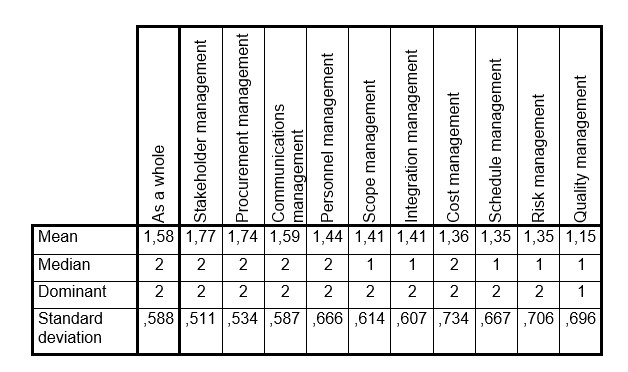Part 1
Let’s talk about public projects!
SERIES ARTICLE
By Stanisław Gasik
Warsaw, Poland
Introduction
Public projects are executed within a distinct context compared to those in other sectors, particularly the private sector. This raises a significant question: are public sector projects inherently distinct, more intricate, and more challenging to oversee than those in other sectors? Is this attributed to the unique characteristics of public sector organizations and their projects? This article delves into these inquiries.[1]
Relative complexity of projects
Gasik (2023) conducted a survey on the differences in complexity between public projects and projects in other sectors. As part of this study, project management experts worldwide were queried about the comparative complexity of projects across various sectors. A total of 512 respondents from around the globe participated in the survey. All management domains outlined in the PMBOK Guide (PMI, 2017) were evaluated. Each participant could assess the relative complexity using a scale ranging from 0 (private projects being more complex than public projects) to 1 (no discernible differences in complexity) to 2 (public projects being more complex). The survey findings are presented in the table below.
Table The Relative Complexity of Public Sector Project Management Areas (source Gasik, 2023)

The survey results indicate that respondents view project management in the public sector as generally more complex compared to project management in other sectors. Additionally, respondents perceive that managing public sector projects across all domains is more complex than managing private projects. The management areas using the criterion of relative complexity may be divided into three groups:
1 The group with the most significant differences encompasses areas with relative complexity ranging from 1.77 to 1.59. This group comprises stakeholder management, procurement management, and communication management.
2 The group with average differences comprises areas with relative complexity ranging from 1.44 to 1.35. This group includes people management, scope management, integration management, cost management, schedule management, and risk management.
3 A group with minimal differences solely covers the area of quality management. Its index of relative complexity for public sector projects is 1.15.
In the following sections, we’ll delve into the areas exhibiting the most significant differences.
Public projects are executed within the framework of public organizations. As such, their unique characteristics and differences of complexity are influenced by the attributes of these entire public organizations. We will explore these characteristics as necessary to comprehend the differences in the projects they implement.
More…
To read entire article, click here
Editor’s note: This article series is related to the management of public programs and projects, those organized, financed and managed by governments and public officials. The author, Dr. Stanisław Gasik, is the author of the book “Projects, Government, and Public Policy”, recently published by CRC Press / Taylor and Francis Group. That book and these articles are based on Dr. Gasik’s research into governmental project management around the world over the last decade. Stanisław is well-known and respected by PMWJ editors; we welcome and support his efforts to share knowledge that can help governments worldwide achieve their most important initiatives.
How to cite this paper: Gasik, S. (2024). How public projects differ from other projects, Part 1, Let’s talk about public projects, series article, PM World Journal, Volume XIII, Issue IV, April. Available online at https://pmworldlibrary.net/wp-content/uploads/2024/04/pmwj140-Apr2024-Gasik-How-Public-Projects-Differ-Part-1.pdf
About the Author

Stanisław Gasik, PhD, PMP
Warsaw, Poland
![]()
Dr. Stanisław Gasik, PMP is a project management expert. He graduated from the University of Warsaw, Poland, with M. Sc. in mathematics and Ph. D. in organization sciences (with a specialty in project management). Stanisław has over 30 years of experience in project management, consulting, teaching, and implementing PM organizational solutions. His professional and research interests include project knowledge management, portfolio management, and project management maturity. He is the author of the only holistic model of project knowledge management spanning from the individual to the global level.
Since 2013, his main professional focus has been on public projects. He was an expert in project management at the Governmental Accountability Office, an institution of the US Congress. He is the author of “Projects, Government, and Public Policy,” a book that systematizes knowledge about government activities in the area of project management.
He was a significant contributor to PMI’s PMBOK® Guide and PMI Standard for Program Management and contributed to other PMI standards. He has lectured at global PMI and IPMA congresses and other international conferences.
His web page is www.gpm3.eu.
To view other works by Dr. Gasik, please visit his author showcase in the PM World Library at https://pmworldlibrary.net/authors/stanislaw-gasik-phd-pmp/
[1] This article is based on the content of chapter, Differences between Public Projects and Projects of Other Sectors” (Gasik, 2023).









